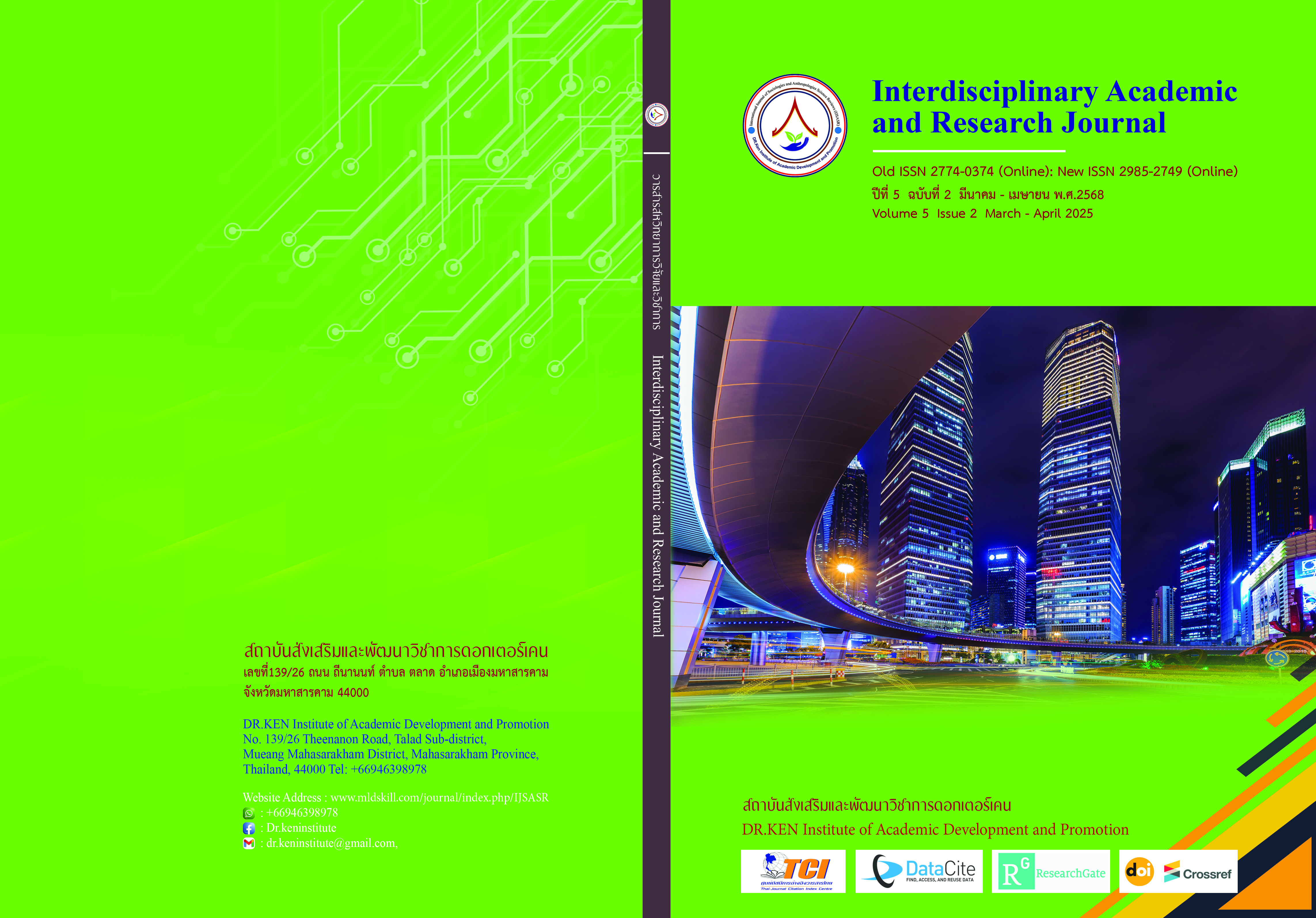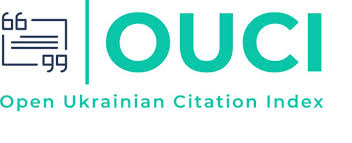Innovation Promotes Lifelong Learning According to the Elderly’s Needs in the Pa Tan Community, Mae Tha District, Lampang Province
DOI:
https://doi.org/10.60027/iarj.2025.282479Keywords:
Lifelong Learning, Needs, Elderly, InnovationAbstract
Background and Aims: Lifelong learning for the elderly is essential to increasing their ability to be self-reliant. This research aims to 1) design an innovation to promote lifelong learning according to the needs of the elderly in Pa Tan Subdistrict, Mae Tha District, Lampang Province, and 2) study the results of the development of lifelong learning of the elderly who received the innovation to promote lifelong learning according to the needs of the Pa Tan Subdistrict, Mae Tha District, Lampang Province.
Methodology: The sample group used in this research was the elderly aged 60 years and over who were members of the Quality of Life Development Center of Pa Tan Nakrua Subdistrict Municipality, Mae Tha District, Lampang Province, totaling 50 people. The research instruments used were 1) semi-structured interviews, 2) questionnaires, 3) field notes, 4) group discussions, and 5) audio recorders. This research was mixed-method research, collecting and analyzing data in several ways. The quantitative data analysis in this research used descriptive statistics, including frequency, percentage, mean, and standard deviation. The qualitative data analysis used content analysis, clustering using content analysis, and interpretation.
Results: The research results found that 1) The survey of the needs of the elderly to use the data to design the innovation to promote lifelong learning according to the needs of the elderly in the community of Pa Tan Subdistrict, Mae Tha District, Lampang Province, with the self-learning content framework to be consistent and appropriate for the basic needs in all 4 areas: 1) Physical needs, 3 hours; 2) Mental needs, 6 hours; 3) Social needs, 6 hours; and 4) Economic needs,
9 hours, totaling 24 hours. 2) The results of the development of lifelong learning of the elderly who received the innovation to promote lifelong learning according to the needs of the community of Pa Tan Subdistrict, Mae Tha District, Lampang Province. The overall result was that the mean was 4.60 and the standard deviation was 0.62, which was at the highest level.
Conclusion: The design of innovation to promote lifelong learning according to the needs of the elderly in Pa Tan Subdistrict, Mae Tha District, Lampang Province, has a self-learning content framework to be consistent and appropriate with the four basic needs: 1) physical needs,
2) mental needs, 3) social needs, and 4) economic needs, so that the elderly can live happily.
References
กฤษณะพงษ์ ดวงสุภา และสยัมภู ใสทา. (2564). การเตรียมความพร้อมเพื่อเข้าสู่สังคมสูงวัย ของประชากรก่อนวัยสูงอายุ อำเภอแม่ทะ จังหวัดลำปาง. วารสารสาธารณสุขล้านนา, 17(1), 52-63.
กาญจนา พิบูลย์, พวงทอง อินใจ, มยุรี พิทักษ์ศิลป์, และพิสิษฐ์ พิริยาพรรณ. (2559). ความต้องการในการจัดบริการการดูแลผู้สูงอายุแบบไปกลับคณะสาธารณสุขศาสตร์ มหาวิทยาลัยบูรพา. วารสารสาธารณสุข มหาวิทยาลัยบูรพา, 11(2), 45-52.
กิจปพน ศรีธานี, ศศิธร กันหาจันทร์, วรุณยุภา หาสีโน และโยธะกา เย็นวัฒนา. (2563). ปัจจัยที่มีความสัมพันธ์ต่อความต้องการเรียนรู้ตลอดชีวิตของผู้สูงอายุในตำบลแวงนาง อำเภอเมือง จังหวัดมหาสารถคาม. วารสารราชพฤกษ์, 18(2), 1-8.
ชวลิต ขอดศิริ, วชิรา เครือคำอ้าย และดารณีย์ พยัคฆ์กุล. (2567). กลยุทธ์สื่อเทคโนโลยีสร้างสรรค์ “หัวใจกตัญญู” เพื่อยกระดับคุณภาพชีวิตผู้สูงอายุ กลุ่มชาติพันธุ์ในสังคมชนบท จังหวัดเชียงใหม่. วารสารปณิธาน, 20(1), 11-21.
ชูชัย สมิทธิไกร. (2554). พฤติกรรมผู้บริโภค. กรุงเทพฯ: จุฬาลงกรณ์มหาวิทยาลัย.
ทนงศักดิ์ ยิ่งรัตนสุข,ภาณุวัฒน์ เชิดเกียรติกูลและปณิตา วรรณพิรุณ. (2557). การพัฒนารูปแบบการเรียนรู้และอาชีพของผู้สูงอายุ: การเรียนรู้เพื่อส่งเสริมภาวะพฤฒพลัง. ชลบุรี: มหาวิทยาลัยบูรพา.
ทรงศักดิ์ รักพ่วง และภุชงค์ เสนานุช. (2562). นวัตกรรมทางสังคมสำหรับผู้สูงอายุ: ความสำคัญต่อสังคมผู้สูงอายุในประเทศไทย. วารสารวิชาการนวัตกรรมสื่อสารสังคม, 7(2), 205-215.
วิภาดา มุกดา และสรินยา สมบุญ. (2563). การสร้างนวัตกรรมต้นแบบของโรงเรียนผู้สูงวัยในศตวรรษที่ 21 เขตพัฒนาการท่องเที่ยว 12 เมืองต้องห้ามพลาด. วารสารวิชาการ มหาวิทยาลัยหอการค้าไทย มนุษยศาสตร์และสังคมศาสตร์, 40(3), 65-80.
ศิริลักษณ์ คัมภิรานนท์ และคณะ. (2564). นวัตกรรมชุมชนการเรียนรู้ตลอดชีวิตของผู้สูงอายุโดย ใช้ชุมชนและโรงเรียนผู้สูงอายุเป็นฐานของ องค์กรปกครองส่วนท้องถิ่น เขตอำเภอเมือง จังหวัดยะลา. ทุนอุดหนุนจากงบประมาณบำรุงการศึกษาประจำปี 2564 มหาวิทยาลัยราชภัฏยะลา.
สํานักงานคณะกรรมการการศึกษาแห่งชาติ. (2543). คุณภาพของครูสู่คุณภาพการเรียนรู้. แปลโดย สุรศักดิ์ หลาบมาลา. กรุงเทพฯ: สํานักงานคณะกรรมการการศึกษาแห่งชาติ.
สำนักงานคณะกรรมการสุขภาพแห่งชาติ. (2552). ธรรมนูญว่าด้วยระบบสุขภาพแห่งชาติ พ.ศ. 2550. นนทบุรี: บริษัทวิกิจำกัด.
สำนักงานเลขาธิการสภาการศึกษา. (2561). สภาวะการศึกษาไทยปี 2559/2560 แนวทางการปฏิรูปการศึกษาไทยเพื่อก้าวสู่ยุค Thailand 4.0. กรุงเทพฯ : สำนักงานเลขาธิการสภาการศึกษา.
สำนักงานเลขาธิการสภาการศึกษา. (2564). ทักษะที่จำเป็นแห่งอนาคต (Future Skill) เพื่อเตรียมการพัฒนาคุณภาพคนไทยทุกช่วงวัย รองรับการเปลี่ยนแปลงอย่างรวดเร็ว (Disruption) ของโลกศตวรรษที่ 21 : ผลการศึกษาและแนวทางการส่งเสริม. กรุงเทพฯ: สำนักวิจัยและพัฒนาการศึกษาสำนักงานเลขาธิการสภาการศึกษา.
สำนักงานสถิติแห่งชาติ. (2557). บัญชีประชาชาติ (NI, QGDP, GPP). Retrieved June 25, 2024, from http://service.nso.go.th/nso/web/statseries/statseries15.html
สำนักงานสถิติแห่งชาติ. (2564). สถานการณ์์ผู้้สููงอายุุไทยในมิิติิความต่่างเชิิงพื้้นที่ พ.ศ. 2564. Retrieved June 25, 2024, from https://www.dop.go.th/download/knowledge/th1610945020-322_0.pdf
สุธีรา บัวทอง สุทธิพงศ์ สภาพอัตถ์ และศิริณา จิตต์จรัส. (2558). ผู้สูงอายุกับเหตุผล ในการเรียนรู้วิธีการเรียนรู้และสิงที่ต้องการเรียนรู้. วารสารศึกษาศาสตร์มหาวิทยาลัย ศิลปากร, 12(1), 6-17.
สุมาลี สังข์ศรี. (2544). รายงานการวิจัยการศึกษาตลอดชีวิตเพื่อสังคมไทยในศตวรรษที่ 21.กรุงเพทฯ: สำนักงานคณะกรรมการการศึกษาแห่งชาติ.
โสภา ขันทะเสน และคณะ. (2564). แนวทางการพัฒนาคุณภาพชีวิตผู้สูงอายุโดยสถานศึกษาในสังกัดสำนักงานคณะกรรมการการอาชีวศึกษา. วารสารมหาจุฬานาครทรรศน์, 8(9), 47-60
อรรถกฤต ปัจฉิมนันท์. (2562). ติดตามประเมินผลการดำเนินงานของกรมกิจการผู้สูงอายุตามแผนปฏิบัติราชการและแผนการใช้จ่ายงบประมาณ และแผนบูรณาการสร้างความเสมอภาคเพื่อรองรับสังคมผู้สูงอายุ ประจำปีงบประมาณ. นนทบุรี : โปเต้ ก็อปปี้จำกัด.
อาชัญญา รัตนอุบล และคณะ. (2554). การศึกษาและการเรียนรู้ตลอดชีวิตของผู้สูงอายุไทย. แหล่งเผยแพร่: มูลนิธิสถาบันวิจัยและพัฒนาผู้สูงอายุไทย.
Haggstrom, B.M. (Ed.). (2003). The Role of Libraries in Lifelong Learning: Final Report of the IFLA Project under the Section for Public Libraries. Retrieved. from http://www.ifla.org/publications/the-role-of-libraries-inlifelong-learning.
Martha R. Crowther, Michael W. Parker, W. A. Achenbaum, Walter L. Larimore, & Koenig, 2002). Rowe and Kahn's model of successful aging revisited: positive spirituality--the forgotten factor. The Gerontologist, 42(5), 613–620.
Nordstrom, N. M. (2011). Top 10 Benefits of Lifelong Learning. Retrieved July 20, 2013, from http://www.selfgrowth.com/articles/.
World Health Organization. (2002). Active Ageing: A Policy Framework. Geneva: World Health Organization.
Zhan, L. (1992). Quality of life: Conceptual and measurement issues. Journal of Advance Nursing, 17(7), 759-800.
Downloads
Published
How to Cite
Issue
Section
License
Copyright (c) 2025 Interdisciplinary Academic and Research Journal

This work is licensed under a Creative Commons Attribution-NonCommercial-NoDerivatives 4.0 International License.
Copyright on any article in the Interdisciplinary Academic and Research Journal is retained by the author(s) under the under the Creative Commons Attribution-NonCommercial-NoDerivatives 4.0 International License. Permission to use text, content, images, etc. of publication. Any user to read, download, copy, distribute, print, search, or link to the full texts of articles, crawl them for indexing, pass them as data to software, or use them for any other lawful purpose. But do not use it for commercial use or with the intent to benefit any business.
















.png)


